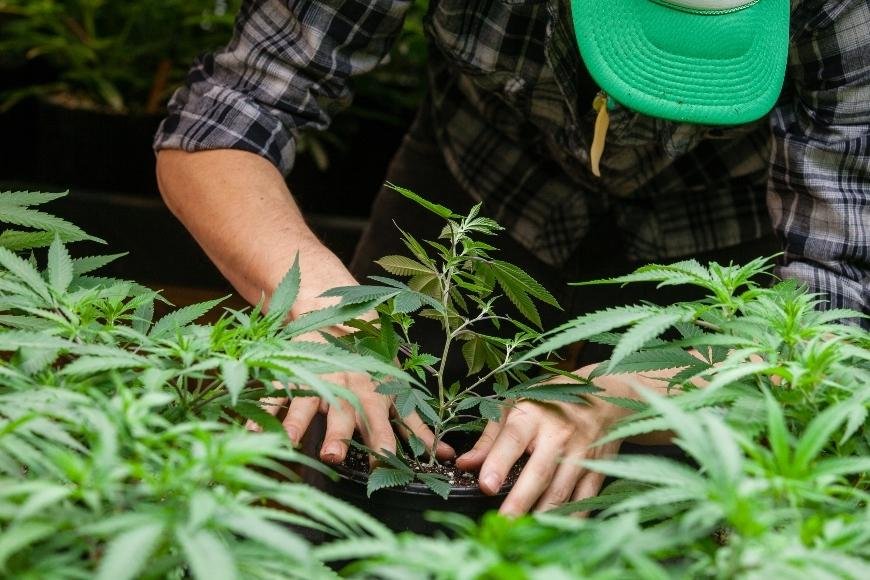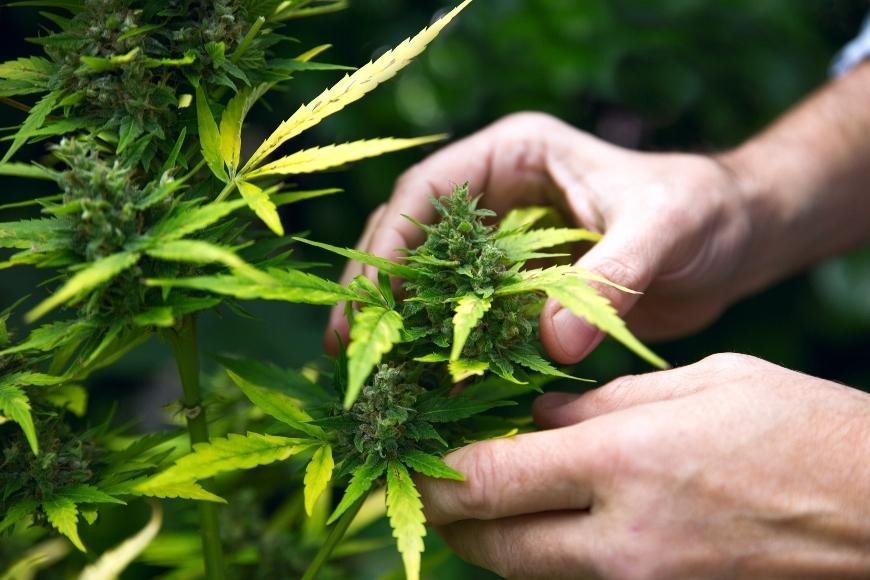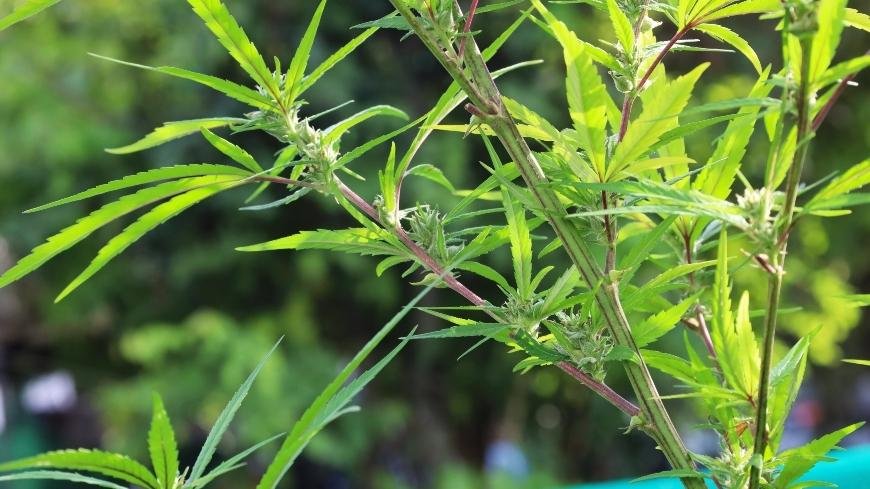Supercropping Cannabis Plants: How To
Learn Supercropping Cannabis Plants: How To boost potency and yield with this comprehensive guide for an ultra-potent harvest.

Supercropping Cannabis Plants: How To is a technique that has gained significant attention among cannabis cultivators for its ability to increase yield and potency. This advanced method involves manipulating the plant's growth patterns, resulting in structurally sound plants with improved bud production. In this blog post, we will delve into the world of supercropping cannabis plants and provide you with comprehensive guidance on how to achieve an ultra-potent harvest.
We will discuss when to supercrop your cannabis plants, ensuring optimal results during their various growth stages. Furthermore, we'll explore the benefits of this technique and why many growers find it advantageous over other methods of cultivation.
Lastly, we'll share essential tips and precautions for Supercropping Cannabis Plants: How To so that even inexperienced growers can confidently apply these techniques to their own gardens. By understanding the science behind supercropping and implementing our expert advice, you're well on your way towards cultivating high-quality cannabis plants with impressive yields.
Table of Contents:
- What is Supercropping?
- Main Goals of Supercropping
- When to Supercrop Cannabis Plants
- How to Supercrop Cannabis Plants
- Benefits of Supercropping Cannabis Plants
- Tips for Supercropping Cannabis Plants
- Precautions for Supercropping Cannabis Plants
- Conclusion
What is Supercropping?
Supercropping is a high-stress training (HST) technique used by cannabis growers to increase the yield and potency of their plants. By strategically bending, pinching, and even breaking certain parts of the plant, you can stimulate new growth and improve overall bud production. This method not only helps in maximizing your harvest but also ensures that your plants remain healthy throughout their life cycle.
When you supercrop a cannabis plant, you're essentially causing controlled damage to its tissues. This triggers the release of auxins, hormones responsible for regulating plant growth patterns. As a result, auxins promote cell regeneration at the damaged site while redirecting energy towards lateral branches and lower nodes.
This process encourages bushier growth with more colas or flowering sites on each branch - ultimately leading to an increased yield when it's time for harvesting.
Main Goals of Supercropping
- Increase Yield: The primary goal of supercropping is to boost yields by creating multiple colas on each branch instead of just one main cola at the top.
- Better Light Distribution: A bushier canopy allows for better light distribution among all budsites; this leads to higher-quality flowers with improved cannabinoid content.
- Pest Management: The dense foliage created through supercropping makes it harder for pests like spider mites or aphids to infest your garden as they have fewer access points into individual leaves or stems.
- Spatial Efficiency: Supercropping can help you make the most of limited grow space by encouraging plants to grow outwards rather than upwards, which is especially useful for indoor growers with height restrictions.
Supercropping is an advanced technique used to manipulate and increase the yield of cannabis plants. When done correctly, it can result in larger buds with increased potency. Now that you know what supercropping is, let's look at when to perform this procedure on your cannabis plants for maximum benefit.

When to Supercrop Cannabis Plants
Knowing the right time to supercrop your cannabis plants is crucial for achieving maximum yields and preventing any unnecessary damage. For best results, it is recommended to supercrop cannabis plants during the vegetative stage when they are in active growth and can easily rebound from any stress.
Ideal Time Frame for Supercropping
- Early Vegetative Stage: It's essential to wait until your cannabis plant has developed at least 4-5 nodes before attempting this technique. This ensures that it has a strong enough structure to withstand bending and pinching without causing permanent damage.
- Late Vegetative Stage: As you approach the end of the vegetative phase, be cautious about supercropping too close to flowering. Doing so may cause undue stress on your plant, potentially reducing bud production or even inducing hermaphroditism in some cases.
- Avoid Flowering Stage: Supercropping should not be performed during the flowering stage since it can significantly reduce yields by damaging developing buds or stressing out your plants too much.
To determine if your cannabis plant is ready for supercropping, observe its growth pattern and overall health. If you notice vigorous growth with multiple branches reaching towards light sources, it's likely an excellent candidate for this technique.
Growth Patterns That Benefit From Supercropping
Certain types of cannabis plants respond better than others when subjected to supercropping techniques due to their natural growth patterns. Some examples include:
- Sativa-dominant strains: These plants typically have a more open structure, making it easier to bend and manipulate branches without causing too much damage.
- Indica-dominant strains: While these plants may be denser in growth, supercropping can still be beneficial by encouraging lateral branching and evening out the canopy for better light distribution.
- Hybrid strains: Depending on their genetic makeup, hybrid cannabis plants can exhibit traits from both Sativa and Indica varieties. In such cases, observe your plant's growth pattern to determine if supercropping is appropriate or not.
In summary, knowing when to supercrop your cannabis plants is essential for maximizing yields while minimizing stress on your precious green friends. By following the guidelines outlined above and observing your plant's natural tendencies, you'll be well-equipped to make informed decisions about implementing this powerful technique.
How to Supercrop Cannabis Plants
Supercropping cannabis plants is a simple yet effective technique that can significantly increase your yields. Follow these step-by-step instructions to successfully supercrop your plants:
Step 1: Choose the Right Branches
Select branches that are healthy, strong, and have multiple nodes. Avoid choosing weak or damaged branches as they may not recover well from the stress of supercropping.
Step 2: Soften the Stem
Gently squeeze and roll the stem between your fingers about an inch below the node you want to bend. This will help break down some of its fibers without causing severe damage, making it easier for you to bend later on.
Step 3: Bend the Branch
Carefully bend the branch at a 90-degree angle in any direction away from its original position. Be gentle but firm when bending; if done correctly, this should not cause any significant damage or snapping.
Tape Method (Optional)
- If you accidentally snap a branch during bending, don't worry. You can use duct tape or plant tape to secure it back together and allow it time to heal properly.
- Learn more about repairing broken cannabis branches here.
Step 4: Monitor Your Plant's Recovery
Keep a close eye on your cannabis plants after supercropping to ensure they are recovering well. You should see new growth and stronger branches within a week or two. If you notice any signs of distress, such as wilting or yellowing leaves, adjust your care routine accordingly.
Supercropping cannabis can be a great technique to augment yields and boost the quality of your harvest. With this method, you can maximize light exposure and nutrient absorption for healthier buds. Supercropping your cannabis plants can provide a number of advantages, such as improved yields and enhanced bud quality due to increased light exposure and nutrient absorption.
Benefits of Supercropping Cannabis Plants
Supercropping is a popular technique among cannabis growers for several reasons. By strategically damaging the plant, you can achieve increased yields and improved overall health. Other benefits include:
Increase in Bud Production
The primary goal of supercropping is to boost bud production by encouraging new growth sites on the plant. When done correctly, this method can lead to an increase in bud sites, resulting in higher yields come harvest time.
Better Light Distribution
Supercropping helps create a more even canopy across your plants by breaking apical dominance - that's when one main stem grows taller than others and receives most light exposure. With a more uniform canopy height, all parts of the plant receive equal amounts of light, which promotes better growth and ultimately leads to larger buds.
Improved Plant Health
- Stronger Stems: As damaged stems heal from supercropping stressors, they become thicker and stronger over time. This allows them to support heavier bud loads without collapsing under their weight during flowering stages.
- Better Nutrient Uptake: The process also encourages greater nutrient uptake as it stimulates root development below ground level while promoting additional branching above ground level.
- Disease Resistance: A healthier plant has an increased ability to fend off pests or diseases that might otherwise compromise its vitality or yield potential.
Supercropping cannabis plants can provide a variety of benefits, including increased yield and improved flavor. However, to guarantee a successful supercropping experience it is essential to understand the right methods. Next up, we'll look at some tips for successfully supercropping your cannabis plants.

Tips for Supercropping Cannabis Plants
Successfully implementing the supercropping technique requires some practice and attention to detail. To help you get started, here are some tips that will ensure your cannabis plants thrive while minimizing potential harm:
- Choose the right branches: Focus on bending and pinching healthy, thick branches that can withstand the stress of supercropping. Avoid thin or weak stems as they may not recover well from the process.
- Be gentle yet firm: When applying pressure to bend a branch, be gentle but firm enough to cause damage without snapping it completely. It's essential to find a balance between causing intentional injury and preserving the plant's structural integrity.
- Create an even canopy: The goal of supercropping is to promote an even distribution of light across all buds by creating a level canopy. Ensure you're bending branches at similar heights so no part of your plant remains in shadow.
- Maintain cleanliness: Always sanitize your hands or wear gloves when handling your plants during supercropping. This helps prevent contamination with bacteria or pests that could negatively impact their health.
- Splinting if necessary: If any stem accidentally snaps during super cropping, don't panic. Use tape or string as splints around broken areas allowing them time heal themselves over few days before resuming growth normally again.
By following the tips outlined in this article, you can successfully supercrop your cannabis plants for better yields and healthier growth. Still, caution should be taken when executing this method to avoid any damage or harm inflicted on the plants.
Precautions for Supercropping Cannabis Plants
While supercropping can lead to increased yields and healthier plants, it's essential to take certain precautions when implementing this technique. Failure to do so may result in damage or stress that could negatively impact your cannabis plant's growth.
Avoid Overdoing It
Supercropping involves intentionally damaging the plant, but overdoing it can cause more harm than good. Be gentle while bending and pinching the branches, ensuring you don't completely break them off. If a branch does accidentally snap, use tape or string to hold it together until it heals.
Select the Right Branches
- Main stems: Avoid supercropping main stems as they provide structural support for your cannabis plant. Focus on secondary branches instead.
- New growth: Don't supercrop new growth tips as they are too delicate and prone to breaking easily.
- Mature branches: Target mature branches that have developed enough strength and flexibility without being too woody or brittle.
Timing is Crucial
The ideal time for supercropping is during the vegetative stage of your cannabis plants' life cycle - specifically between weeks two and four after switching from seedling stage. This allows ample time for recovery before transitioning into the flowering phase. Attempting this technique during flowering may reduce overall bud production due to added stress on the plant.
Sanitize Your Tools
Before you begin supercropping, ensure your hands and tools are clean to minimize the risk of introducing pathogens or pests. Cleanse your scissors, pliers, or any other equipment that comes into contact with the cannabis plants by using rubbing alcohol to reduce the risk of introducing pathogens or pests before and after supercropping.
Monitor Plant Health
After implementing supercropping techniques, keep a close eye on your cannabis plants' health. Watch for signs of stress such as yellowing leaves or wilting branches. If these symptoms persist beyond a few days after supercropping, consider adjusting your approach and providing additional care like nutrient supplementation.
Taking these precautions will help ensure successful implementation of the supercropping technique while minimizing potential risks associated with damaging your cannabis plants.
Conclusion
Supercropping cannabis plants is an effective technique to increase yields and maximize bud production. By strategically bending, pinching, and even breaking certain parts of the plant at the right time, growers can stimulate new growth while avoiding damage to their crop. When done correctly with caution and care taken into consideration, supercropping cannabis plants can be a great way for recreational growers to get more out of their harvest without putting in extra effort or resources.



























































































































